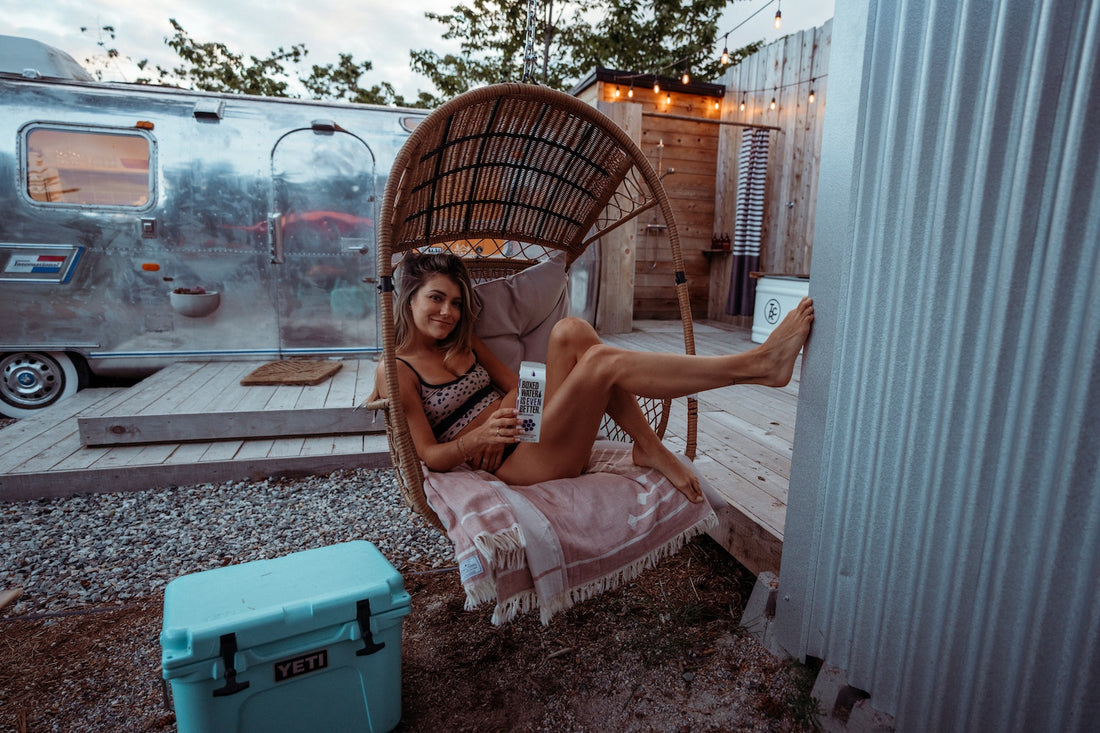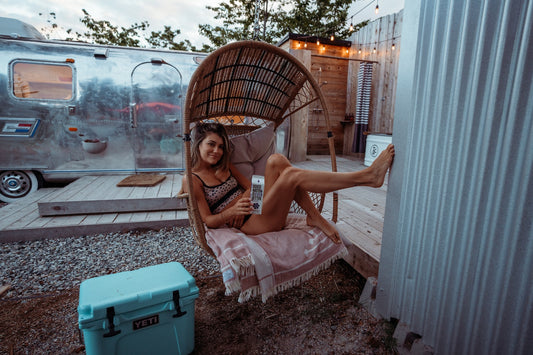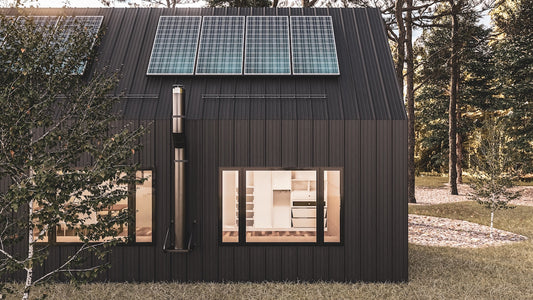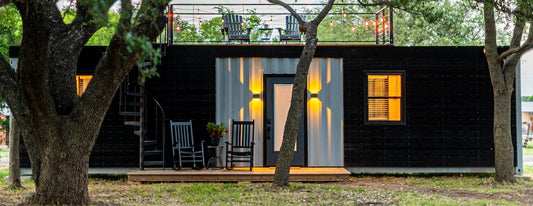Off-Grid Living: The Utility Overview for Your Tiny Home
Introduction to Off-Grid Living
In an increasingly interconnected world, the idea of living independently and sustainably is more appealing than ever. Off-grid living in a tiny home offers a blend of both – minimal environmental impact and a life untethered from municipal utility networks. In this guide, we’ll explore how you can establish a comfortable, self-sufficient life in your tiny home, complete with real-life examples and cost considerations.
Electricity: Light Up Your Life, Naturally
Solar Panels
Harness the sun's energy with solar panels, a clean and renewable energy source. Install a battery storage system to save excess energy for cloudy days.
- Estimated Cost: A small solar setup for a tiny house might cost around $8,000 to $15,000.
- Budget Tip: Consider starting with a smaller system and expanding as your budget allows. Federal and state incentives can often help offset the initial costs.
- Tip: Opt for adjustable mounting systems, allowing you to optimize the angle of your panels seasonally.
Advantages:
- Renewable and abundant energy source.
- Can lead to significant savings on electricity bills.
- Allows for energy independence.
Disadvantages:
- High initial installation costs.
- Energy production is weather-dependent.
- Requires space and may have aesthetic implications for your property.
Case Study: Sarah’s Solar Sanctuary
Sarah, a graphic designer, lives in a 200-square-foot tiny home nestled in the mountains of Colorado. She installed a 4 kW solar panel system for $12,000 that fully powers her home year-round. To maximize the efficiency of her system, Sarah chose energy-efficient appliances and LED lighting. "It's all about balance," she says. "I can work remotely with reliable electricity, but I'm also treading lightly on the earth."
Wind Turbines
For those living in windy regions, small wind turbines can be a sustainable solution.
- Estimated Cost: A small wind turbine can cost between $3,000 and $8,000, installed.
- Budget Tip: Research your location’s wind resource potential before investing, and consider a hybrid system with solar to balance energy production.
- Tip: Regular maintenance is key to longevity; inspect your turbine regularly for wear and tear.
Advantages:
- Renewable Energy Source: Wind is a plentiful and sustainable resource that does not deplete over time.
- Low Operating Costs: Once installed, the ongoing maintenance and operational costs of wind turbines are relatively low.
- Energy Independence: Wind turbines can help reduce reliance on grid electricity, leading to greater energy self-sufficiency.
- Reduced Carbon Footprint: Wind energy is clean and does not produce greenhouse gas emissions.
Disadvantages:
- Intermittent Energy Source: Wind energy is not constant; it relies on wind speed and direction, which can be unpredictable.
- High Initial Costs: The cost of purchasing and installing a wind turbine can be significant.
- Aesthetic and Noise Concerns: Some people find wind turbines to be visually unappealing, and they can generate noise.
- Space Requirements: Wind turbines require a substantial amount of space and are not suitable for all property types.
Hydroelectric System
Living by a stream or river? Consider a small hydroelectric generator, converting flowing water into electricity.
- Estimated Cost: Systems vary, but might range from $1,000 for a very small setup to over $20,000 for larger systems.
- Budget Tip: Check local regulations and potential grants or incentives.
-
Tip: Check local regulations as permits may be required for installing hydroelectric systems.
Advantages:
- Constant Energy Source: Unlike solar or wind, water flows continuously, providing a reliable and consistent power source.
- No Fuel Required: Hydroelectric systems don't require fuel, making them relatively cheap to operate after installation.
- Low Greenhouse Gas Emissions: Hydroelectric power is a clean energy source that does not directly emit greenhouse gases.
- Potential for Energy Storage: Excess energy can be stored for use during times of lower water flow.
Disadvantages:
- Location Specific: Hydroelectric systems require a flowing water source, making them unsuitable for many locations.
- Environmental Impact: Dams and other infrastructure can have significant impacts on aquatic ecosystems and water quality.
- High Initial Costs: The upfront cost of setting up a hydroelectric system can be substantial.
- Regulatory and Permitting Challenges: Implementing a hydroelectric system often involves complex permitting and can be subject to extensive regulations.
Case Study: The River Retreat of Jack and Maya
Jack and Maya turned their love for the outdoors into a lifestyle, living beside a river in Oregon. They invested $9,000 in a micro-hydroelectric system, which harnesses the river's flow to power their 250-square-foot home. "It's constant, reliable energy," Jack notes. "The river is our lifeline in more ways than one."
Water: Sustainably Sourced and Used
Drilling a Well
A well can provide a reliable source of clean water, right under your feet.
- Estimated Cost: Drilling a well can range from $5,000 to $15,000, depending on depth and location.
- Budget Tip: Research local groundwater conditions extensively before drilling and consider sharing the well (and cost) with a neighbor if possible.
- Tip: Regularly test your well water for contaminants and ensure the well is properly sealed to prevent contamination.
Advantages:
- Reliable Source: Provides a consistent and dependable supply of water.
- Water Quality: Often yields clean and fresh water that may not require extensive treatment.
- Cost Savings: Long-term savings through the avoidance of monthly water bills.
Disadvantages:
- Initial Cost: High upfront cost for drilling and pump installation.
- Maintenance: Requires regular maintenance to ensure water quality and pump function.
- Risk of Contamination or Drought: There's a risk of the well running dry or getting contaminated.
Rainwater Collection
Collect, filter, and store rainwater for a cost-effective and sustainable water source.
- Estimated Cost: A basic system can start at around $1,000, increasing with capacity and complexity.
- Budget Tip: Start with a smaller system and expand as needed. Use collected water for gardening or flushing toilets to reduce demand on potable water.
- Tip: Check local regulations—some areas have restrictions on rainwater collection.
Advantages:
- Sustainability: Environmentally friendly method of collecting and reusing water.
- Cost-Effective: Can significantly reduce or eliminate water bills.
- Water Quality: Rainwater is often soft and clean, reducing the need for filtration.
Disadvantages:
- Dependent on Climate: Effectiveness varies with local rainfall patterns.
- Initial Setup Cost: Can have a high setup cost for tanks, filters, and plumbing.
- Maintenance: Regular cleaning of gutters, filters, and tanks is necessary.
Greywater Systems: Reusing Water Wisely
A greywater system takes water that has been used in sinks, showers, and washing machines (but not toilets) and reuses it for tasks like garden irrigation. This can be a significant water saver in an off-grid tiny home.
Advantages:
- Water Conservation: Reduces the overall consumption of water by reusing household wastewater.
- Reduced Strain on Septic or Sewer Systems: By diverting greywater, less strain is put on septic systems or municipal sewer lines.
Disadvantages:
- Installation and Maintenance: Greywater systems can be complex to install and require regular maintenance.
- Potential Health Risks: If not managed correctly, greywater systems can pose a risk of contamination and illness.
Waste Management: Clean and Green
Composting Toilet:
Turn human waste into usable compost with a composting toilet system, eliminating the need for a septic tank.
- Estimated Cost: A quality composting toilet system can range from $800 to $2,500.
- Budget Tip: DIY composting toilet systems can be built for under $200 with proper knowledge and materials.
- Tip: Regular maintenance is key. Follow guidelines to ensure safe and effective composting.
Advantages:
- Water Conservation: Uses significantly less water than traditional toilets.
- Produces Compost: Converts human waste into useful compost for gardening.
- Independence: Does not require a septic or sewer system, which can be costly to install.
Disadvantages:
- Maintenance: Requires regular maintenance and emptying.
- Potential Odor: If not managed correctly, it may produce unpleasant odors.
- Local Regulations: Not always accepted by local building codes, posing potential legal issues.
Heating and Cooling: Comfort Off the Grid
Wood Stove:
A wood stove is a timeless and effective way to heat a space. It uses wood as fuel to produce heat, creating a cozy ambiance in your tiny home. Many people who live in colder climates or just love the feel of a real fire choose wood stoves as their primary heating source. Here is a closer look at the pros and cons of this heating option:
- Estimated Cost: A small wood stove can range from $300 to $1,200.
- Budget Tip: Look for second-hand units or consider a smaller model to save costs.
Advantages:
- Efficient Heating: A well-made wood stove can heat a space very effectively and often more quickly than electric or gas alternatives.
- Renewable Fuel Source: Wood is a renewable resource, especially if sourced sustainably from managed woodlands.
- Independence from Utility Companies: Wood stoves allow you to heat your home without reliance on external power or gas companies.
- Ambiance and Aesthetic Appeal: A wood stove adds a warm and inviting atmosphere to your home, with the comforting sight, sound, and smell of a real fire.
- Cooking Capability: Some wood stoves come with a flat top that can be used for cooking, adding to their utility.
Disadvantages:
- Constant Supply of Wood Needed: Requires a regular and often physically demanding supply of firewood, which can be challenging to source, store, and handle.
- Maintenance and Cleaning: Regular cleaning is essential to prevent a buildup of soot and ash, and chimneys must be cleaned to prevent chimney fires.
- Installation Cost and Code Compliance: Proper installation can be costly and must comply with building codes and insurance policies.
- Indoor Air Quality and Safety Concerns: If not properly maintained, wood stoves can lead to indoor air pollution. They also present a fire risk if not used and installed correctly.
- Space Requirement: A wood stove requires space—not just for the stove itself but also for storing wood. This can be challenging in a tiny home setup.
Passive Solar Design
Incorporate south-facing windows, thermal mass, and insulation in your initial tiny house design to reduce the need for active heating and cooling. Passive solar design refers to the use of the sun’s energy to heat and cool living spaces in a building without the use of mechanical systems. It is called "passive" because it does not involve the use of mechanical devices or active systems (like electric pumps) to move heat. Instead, it capitalizes on natural energy flows through smart design and material choices.
- Estimated Cost: Incorporating passive solar design can vary widely, but savings will accrue over time through reduced energy bills.
- Budget Tip: Incorporate passive solar principles in your initial tiny house design to avoid the need for costly retrofits later on.
- Tip: Consult with a professional to optimize your home’s orientation, window placement, and insulation.
Legal and Zoning Considerations
Before you commit to an off-grid lifestyle, be sure you're aware of the local laws and regulations. Many areas have specific rules about what constitutes a legal residence, how land can be used, and what type of waste management systems are allowed.
- Tip: Check with your local municipality or county office for information on zoning and land use regulations. It’s also wise to consult with a land-use attorney or professional.
Final Thoughts
Off-grid living doesn't mean sacrificing comfort or convenience. With careful planning and the right systems in place, your tiny home can be as self-sufficient as it is cozy and charming. Remember to consult with professionals to ensure your off-grid solutions are safe, effective, and in line with local regulations.
This blog post is for informational purposes only. Always consult with a professional before making significant changes to your living situation.
Cost estimates are rough approximations and can vary based on location, scale, and fluctuations in material costs. Always get multiple quotes and budget for additional unexpected costs.
Your feedback
We'd love to hear about your own off-grid adventures! Are you considering taking the plunge, or are you already living off-grid in your own tiny oasis? Share your stories, questions, or tips in the comments below. For more tips, guides, and inspiration on tiny home living, sign up for our newsletter and follow our blog for regular updates.





